There are more compact crossovers in the U.S market than ever before, and it’s easy to understand why this segment pushes huge volume. But that also means it’s harder than ever for individual models to stand out, which is why options like this Mazda CX-50 are adding even more choices and hybridization this year to take on the almighty RAV4. Secretly these two have a little more in common than you might think, so let’s see who wins in a 2025 Mazda CX-50 Hybrid vs. 2025 Toyota RAV4 Hybrid battle!
Pricing and Equipment
So, before we get into what’s similar and different between these two, as well as the exterior and interior comparison, let’s first set things up with the pricing breakdown.
Starting with the CX-50, we have the new hybrid model in the top trim known as Premium Plus.
CX-50 (Hybrid Premium Plus AWD): $40,050 | Options: +$595 | Destination: $1,420 | Total: $42,065
Moving to the RAV4, the trim that aligns with the CX-50 on pricing is the XSE with all the extra goodies. This sporty yet high-end trim rings in at a total price of $42,720, after destination.
RAV4 (Hybrid XSE AWD): $37,560 | Options: +$3,765 | Destination: $1,395 | Total: $42,720
By the way, if you want to get the best price from local dealerships and access to invoice pricing info for these two models or any vehicle, we have a tool on our website to do just that. Click here for more information!
Exterior Design
Starting with the exteriors, both models convey their brand’s respective design philosophies. I’m sure you’ve seen a RAV4 or two out there on the road, so you know that it has a boxy look inspired by the 4Runner. Mazda’s always go for sleeker designs, although the CX-50 is the most rugged-looking model in their lineup. Both vehicles feature darkened grilles and full-LED lighting up front. Neither have fog lamps.
Continuing to the sides, the CX-50 actually has about a 5-inch size advantage on the RAV4, but we will see later on if that advantage translates to more usable space on the inside.
Length: 180.9-inches (RAV4) | 185.8-inches (CX-50)
In the meantime, we will award a score to the Toyota for making the option of a two-tone roof available for those who want it.
I also want to mention the wheels, which are larger contrast 19-inch alloys on the CX-50, while the RAV4 maxes out at 18-inches on hybrid variants.
As a reminder, while we move around back, we don’t score personal design preferences, however, it is worth mentioning that the CX-50 has beefy matte-black cladding and this RAV4 has more modest gloss-black surrounds. Features-wise, both have exposed wipers, spoilers, and dual exposed exhaust tips, while the Mazda has the advantage for rear lighting with all elements of the taillight cluster LED.
Toyota fights back with extra towing capacity, however.
Towing: 1,750 lbs. (RAV4 Hybrid) | 1,500 lbs. (CX-50 Hybrid)
Additional Features
As far as the mirrors are concerned, they both have BSM, heating, and LED turn signals, and the Mazda also adds power-folding.
And speaking of Blind Spot Monitoring, family SUVs need to be safe, and one of the really nice things about these two is that all four of your major active safety features are included as standard equipment.
The warranties are the same on both, outside of the fact that Toyota has complimentary maintenance for 2 years.
This is shaping up to be a tight race, so let’s get into the interiors.

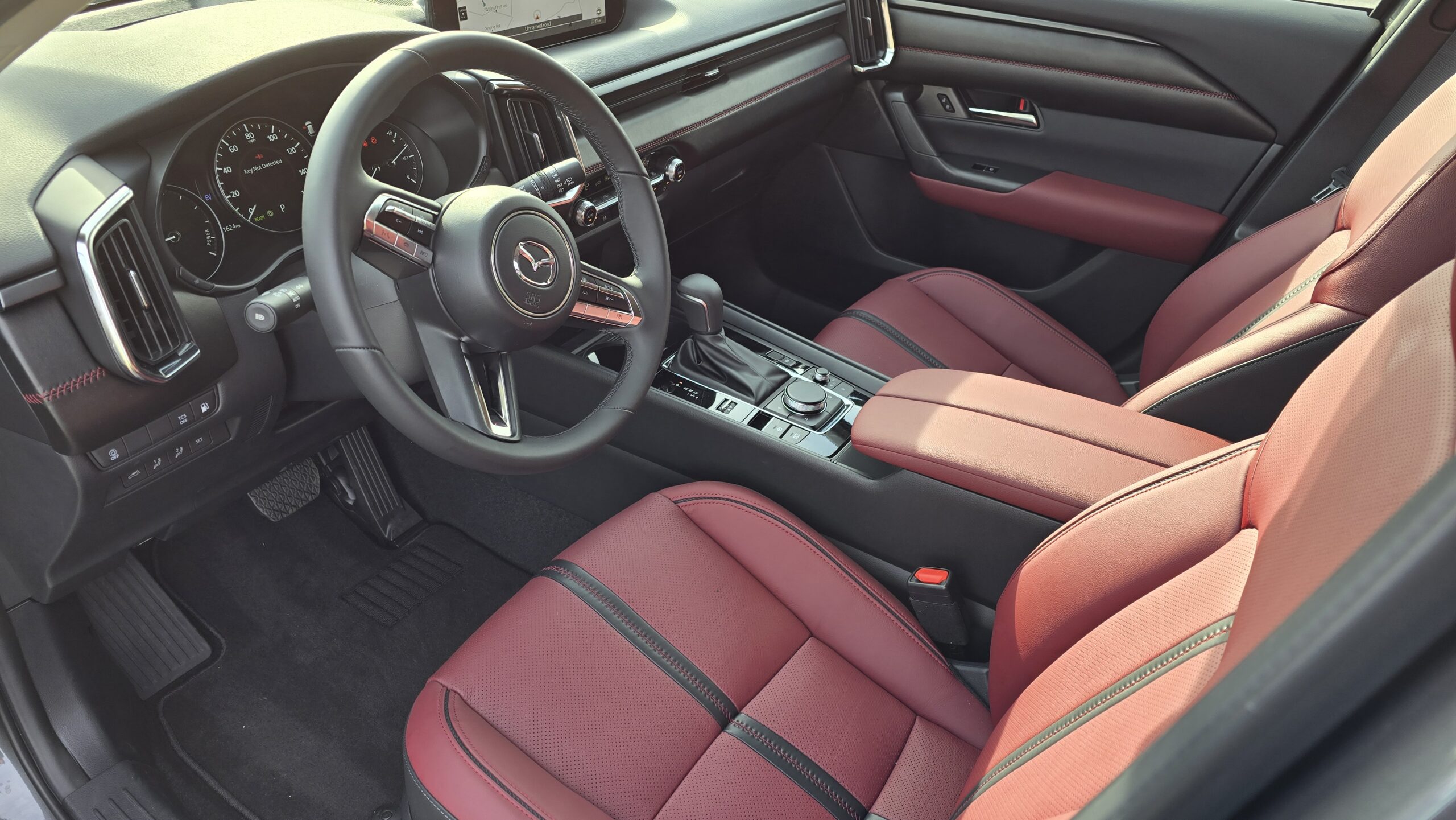
Interior Design
Approaching both SUVs, they have smart entry systems and their brand’s respective key fobs. Both models have remote start options, although subscriptions are required after the trial periods expire.
Note: Toyota’s remote start can be activated via the app or key fob during the free trial period. Length of the trial can vary based on the trim level and options selected.
But after opening the doors, you’ll see these two have stark differences in many areas.
Before we dig into those differences, let’s start with the seats. While they are both 8-way power with lumbar support, the RAV4 is finished in faux leather compared to real leather in the CX-50. They also are both heated but only the Mazda has seat ventilation since that’s not offered on this trim of the RAV4.
Now once inside the cabins, let’s check out the major point category of material quality. Like many Mazda’s, they have put a lot of focus into delivering a luxurious experience with higher-end materials, padded areas, and stitched leatherette throughout. The RAV4 also has plenty of soft materials around the cabin, but it doesn’t feel as plush as the Mazda.
After startup, you’ll see a partially digital gauge cluster on the Mazda and a fully digital cluster on the RAV4, which gives you more customizability.
CX-50 fights back with a premium head-up display in the windshield, which is not available on any RAV4.
Moving back, they have leather-wrapped steering wheels and even rain-sensing wipers as equipped.
Storage and Technology
Now it’s time to evaluate another major interior section: storage. This is where we see that opposite philosophy come into play again since RAV4 emphasizes maximum utility here instead of luxury. Its center console is larger, front storage cubby more versatile, and it has special storage shelf in front of the passenger.
In a sign of what’s to come when we talk about the powertrains, they actually share the same exact physical shifter. But when in reverse, what comes up is different since the RAV4 gives you a 260-degree camera and the Mazda still only gives you a basic camera with fixed body lines. They don’t include a 360-degree camera unless you buy the even more expensive turbocharged model.
Climate controls are simple to use with two zones of adjustment, and both have physical volume knobs. The Mazda has a Bose system and the Toyota a JBL, so let’s go ahead and sample them. Overall, the Bose system is a bit more powerful sounding and has an extra speaker.
CX-50: 12-speaker Bose Centerpoint audio
RAV4: 11-speaker 800-watt JBL Premium audio
People want a high level of technology in cars nowadays, so let’s move to the key element of displays. As far as the sizing, CX-50 has a 10.25-inch setup vs. a 10.5-inch one in the Toyota.
But more important than the tiny size difference is that the Mazda’s screen is mounted far away from the driver, since it is intended to be navigated by the control knob on the dash. When using Mazda’s interface, you cannot touch the screen, although you can strain to touch it when using wireless AA and ACP. The Rav4 also has wireless AA and ACP, and is easier to use in the day-to-day.
As we wrap up the front of the cabins, both have auto-dimming mirrors with HomeLink remotes, and the Toyota has rear camera functionality if you flip the switch.
Up top, they have large panoramic moonroofs that open and have sunshades.
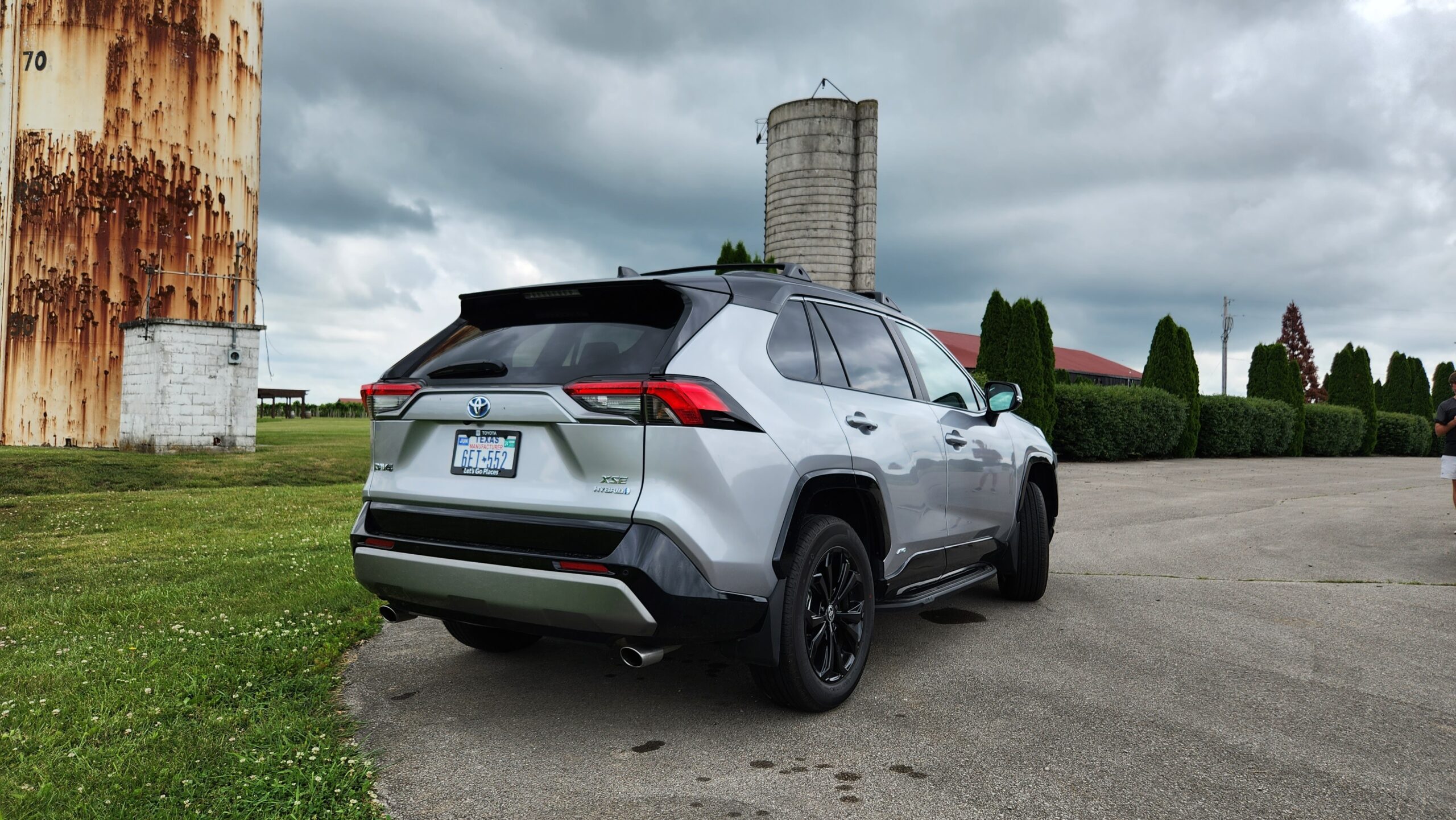
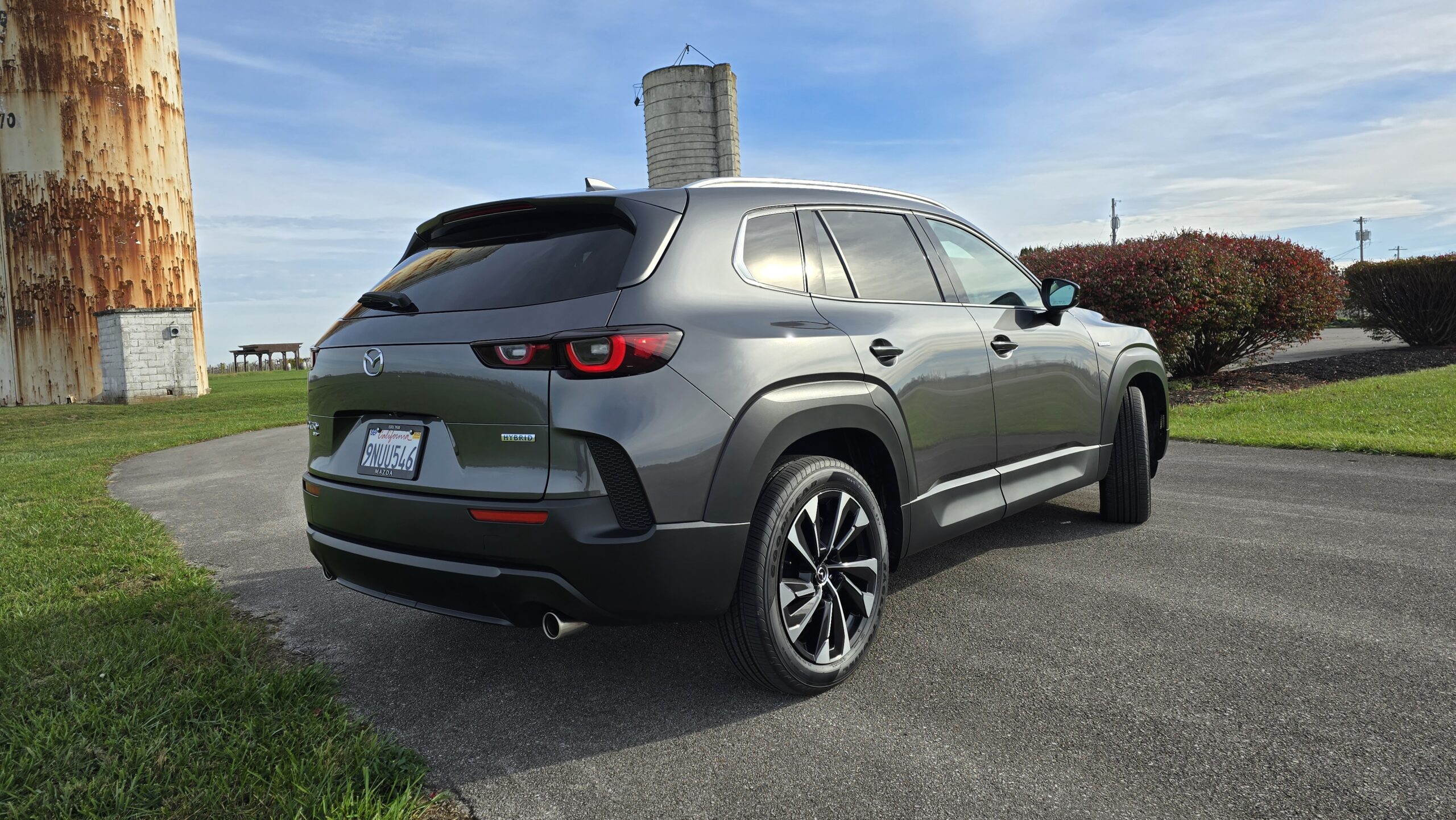
Rear Seats and Cargo
People of all walks of life buy compact crossovers, but they are very commonly used by families with kids, so let’s dive into the important back seats. Starting with space, the CX-50 wins based on the manufacturer-provided specs, however, we measured knee space behind my 5’8’’ driving position in both models and found that it’s the RAV4 that is actually more spacious. You can see that visually as well when Mason is sitting in the back seats. Headroom is also in favor of the RAV4 so it takes the space point.
CX-50: Legroom: 39.8 inches | Headroom: 38.6 inches
RAV4: Legroom: 37.8 inches | Headroom: 39.5-inches
Now that that’s out of the way, they also have quite a few features. Both give you USB ports and rear vents, and neither have heated back seats as equipped. That is available on both models, but you need to spend about $44,000 with the RAV4 Limited trim or buy a turbo-engine CX-50.
Now let’s see how much stuff you can bring along with you for the journey. Both have power tailgates, though only the RAV4 has hand-free kick-to-open.
Once they open up, you will surprisingly see that the shorter RAV4 actually has quite a space advantage. For some reason, the packaging allows the Toyota to give you 21% more maximum space with the back seats folded down. And that’s despite the fact that both of them have spare tires.
RAV4 (Hybrid): Behind 2nd row: 37.6 cubic feet | Max: 69.8 cu.ft
CX-50 (Hybrid): Behind 2nd row: 29.2 cu. ft | Maximum: 56.3 cu. ft
Mazda fights back though by having handles that easily fold the seats without having to walk to the second row.
And speaking of hybrid, let’s take these two family options out on the road and see who does it best!
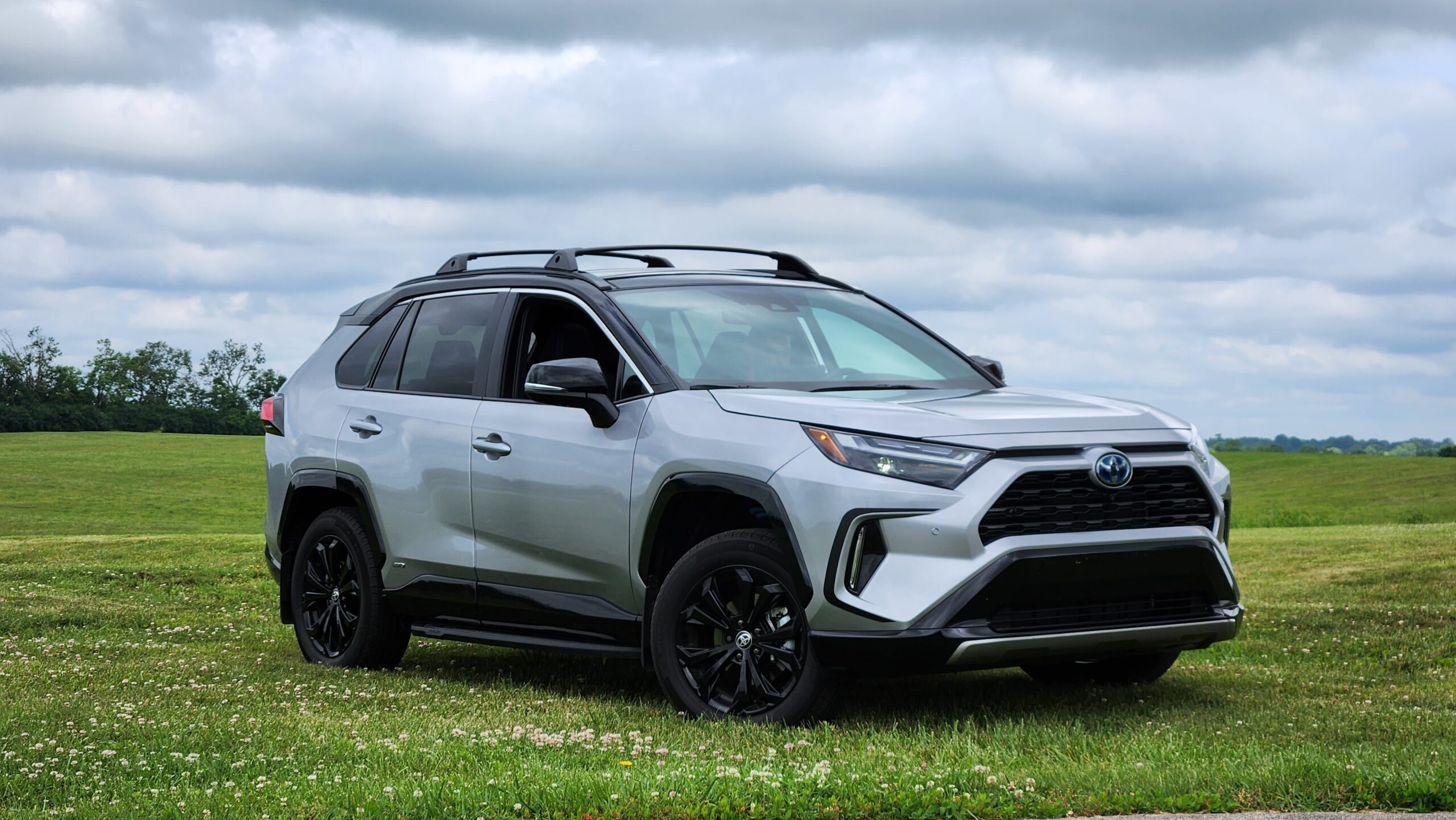
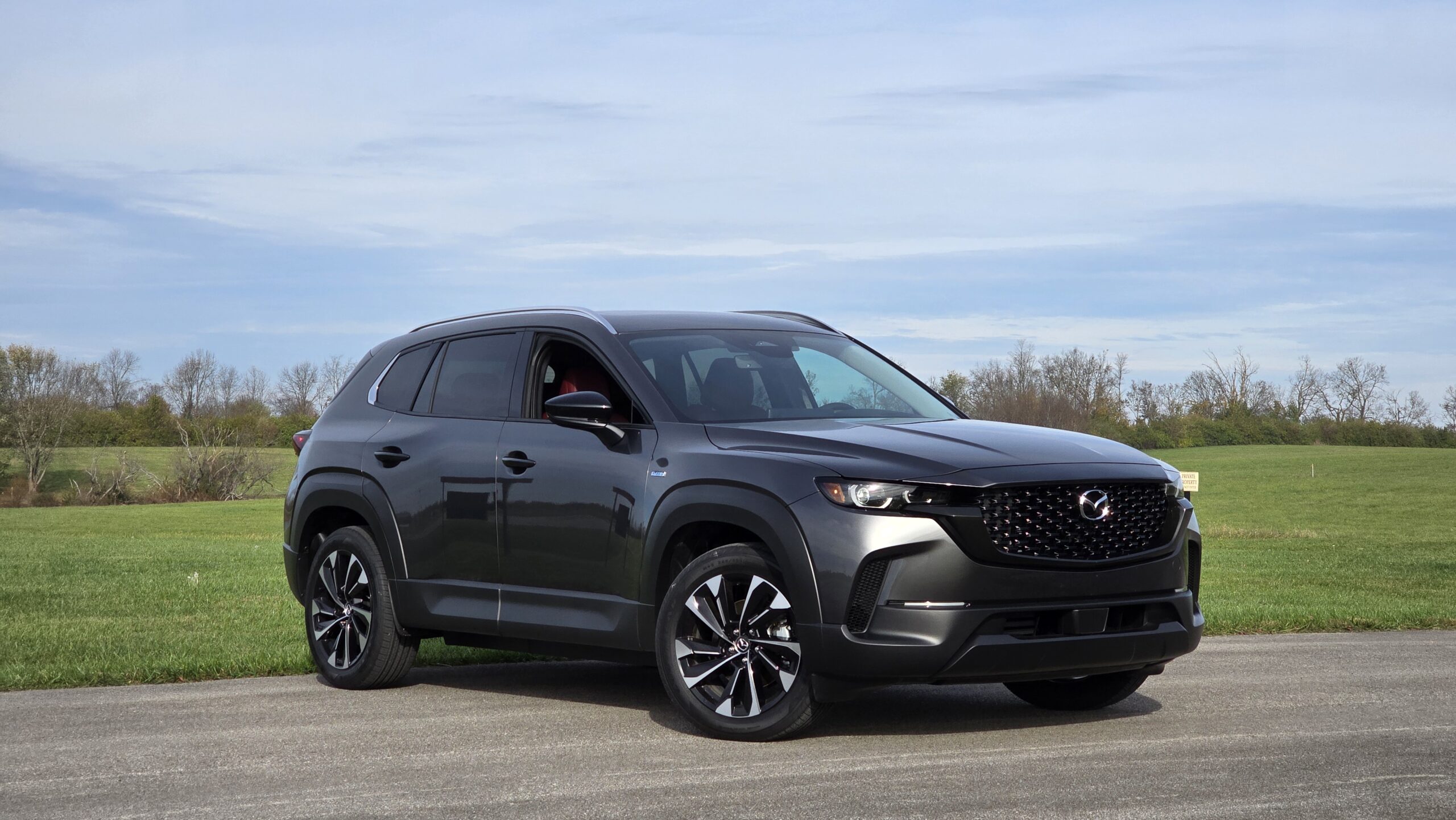
Powertrains
Now it’s time to address the elephant in the room and one of most interesting parts of this comparison: they have the same powertrain. Mazda added a new hybrid for 2025 and it sourced from Toyota, meaning both the Mazda AND Toyota have 219 HP from a 2.5L 4-cylinder and 3 electric motors. As expected, acceleration is basically identical between the two of them.
RAV4 Hybrid: 2.5L I-4 + Elec: 219 hp
CX-50 Hybrid: 2.5L I-4 + Elec: 219 hp
When it comes to transmissions, this hybrid system is paired to an eCVT or electronic continuously variable transmission. This is a very responsive setup, and AWD is also standard on both of them.
Test Drive and Fuel Economy
Besides transmissions, you’re probably wondering how quiet the cabins are when cruising. Well, that’s why here at Car Confections, we take a sound-level reading of every vehicle we test on our channel. On the same stretch of road in Kentucky, we achieved pretty good ratings in both, but neither are class leaders in this regard. The average human ear can discern 1dB of difference in sound change and these two are within 1 dB of each other.
RAV4: 56.7 dB @ 55 MPH
CX-50: 57.5 dB @ 55 MPH
Now let’s talk about an important part for any family SUV; the ride quality. This is where you see distinctly different priorities. RAV4 is very comfort focused so its ride quality is pretty soft, but the CX-50 has a much tighter suspension tune to help with driving dynamics. Because of that, you feel road imperfections and bumps more prominently in the CX-50.
On the flip side however, the CX-50 exhibits incredible handling. It has very little body roll for an SUV in this segment, as well as some of the best steering of any crossover on the market. So if you care about athleticism, the Mazda is the way to go.
Lastly, you might be surprised to learn that these two models are rated differently when it comes to fuel economy. To preface, these are two of the very best options in the class for MPG’s, but the Mazda does trail the RAV4 by 2 MPG combined. So, while not super significant, it is more than the 5% threshold required to score a point.
Resale and Reliability
In our reviews and comparisons, we are also adding in reliability and resale information to give you a better picture of the overall value beyond just the original MSRP.
Beginning with reliability, we developed the Combined Reliability Index, which takes into account several studies from trustworthy sources, and combines them in a way that gives a more realistic picture. Here, the advantages continue for Toyota. Mazda is slightly below average for reliability, by 1 slot to be exact.
We also put Mason’s economics degree to work to develop a detailed Predicted Resale Value tool. After 5 years and 60,000 miles, Toyota has the 2nd highest predicted resale value of 64.5% and Mazda closely trails it at 59.4%.
Resale is obviously important because it determines how much money you get back, but we can’t forget about the price difference at the original purchase. The RAV4 costs $655 more than the CX-50.
I want to emphasize that if money, reliability or resale value matter less to you personally, feel free to disregard these points. And if you’d like to check out all our data about reliability and resale values, as well as learn about our methodology, make sure to head to www.carconfections.com/resale and www.carconfections.com/reliability. Buying a car is a big decision, and this is a great place to compare all the makes you might be cross-shopping.
2025 Mazda CX-50 Hybrid vs. 2025 Toyota RAV4 Hybrid Winner!
So, there you have it; another hot compact crossover comparison is in the books. But let’s recap a little bit and discuss who should be your personal winner.
CX-50:
- Driving dynamics and a performance edge
- Premium interior experience
RAV4:
- Better fuel economy
- More comfortable ride quality
- Touch screen technology
Now we want to know your opinions, so make sure to head to the comment section and let us know which one you would pick!
Thanks for joining us for another Car Confections Comparison! We’ll catch you next time as we sample the latest automotive delicacies!

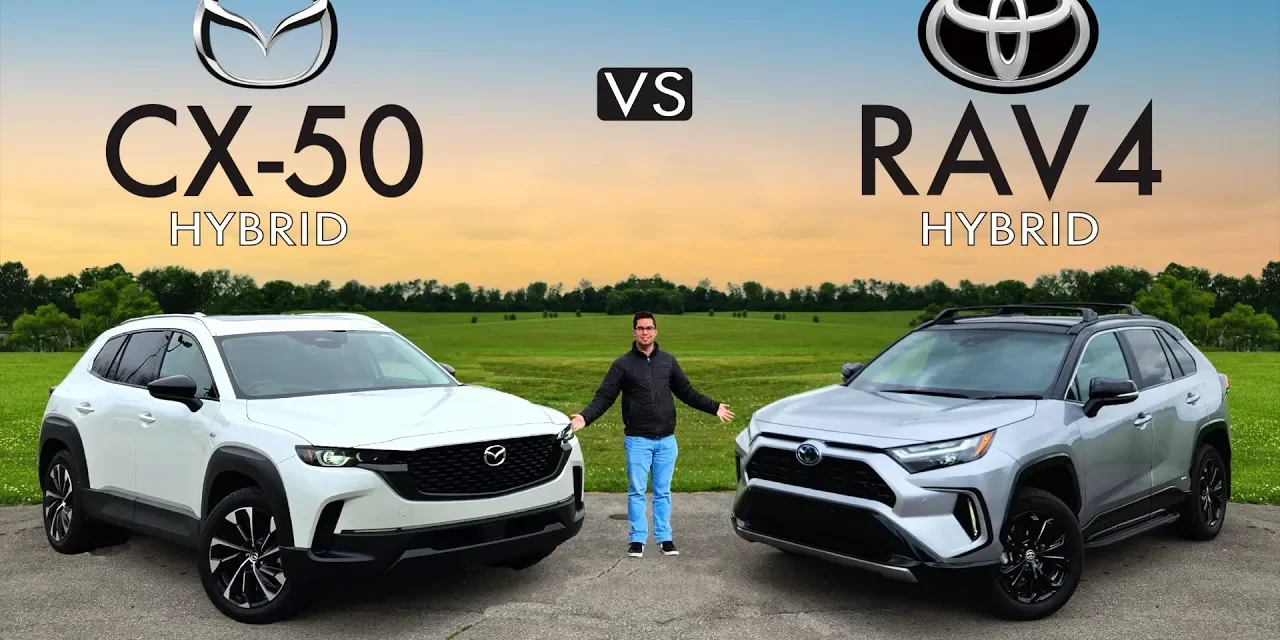
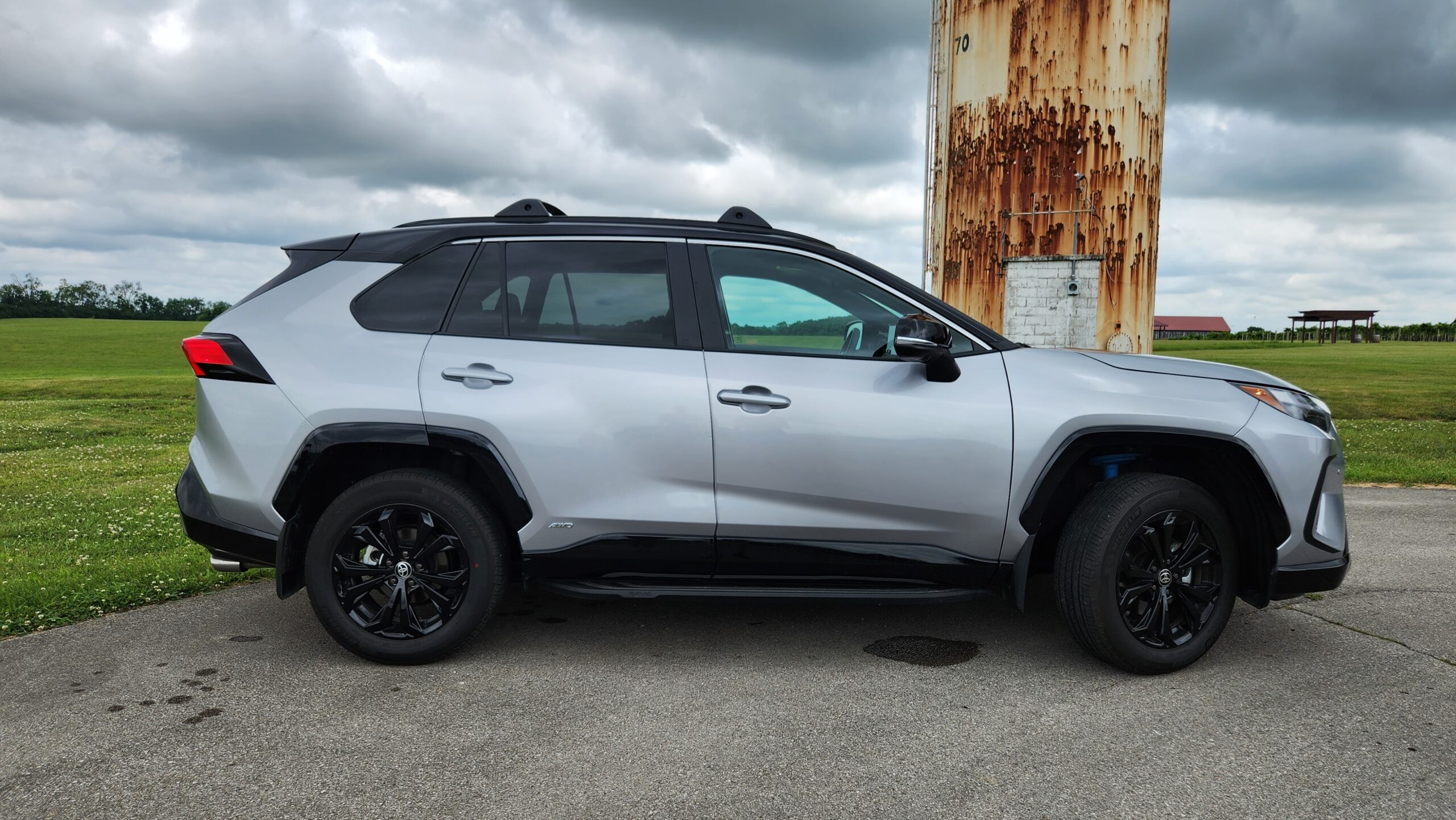
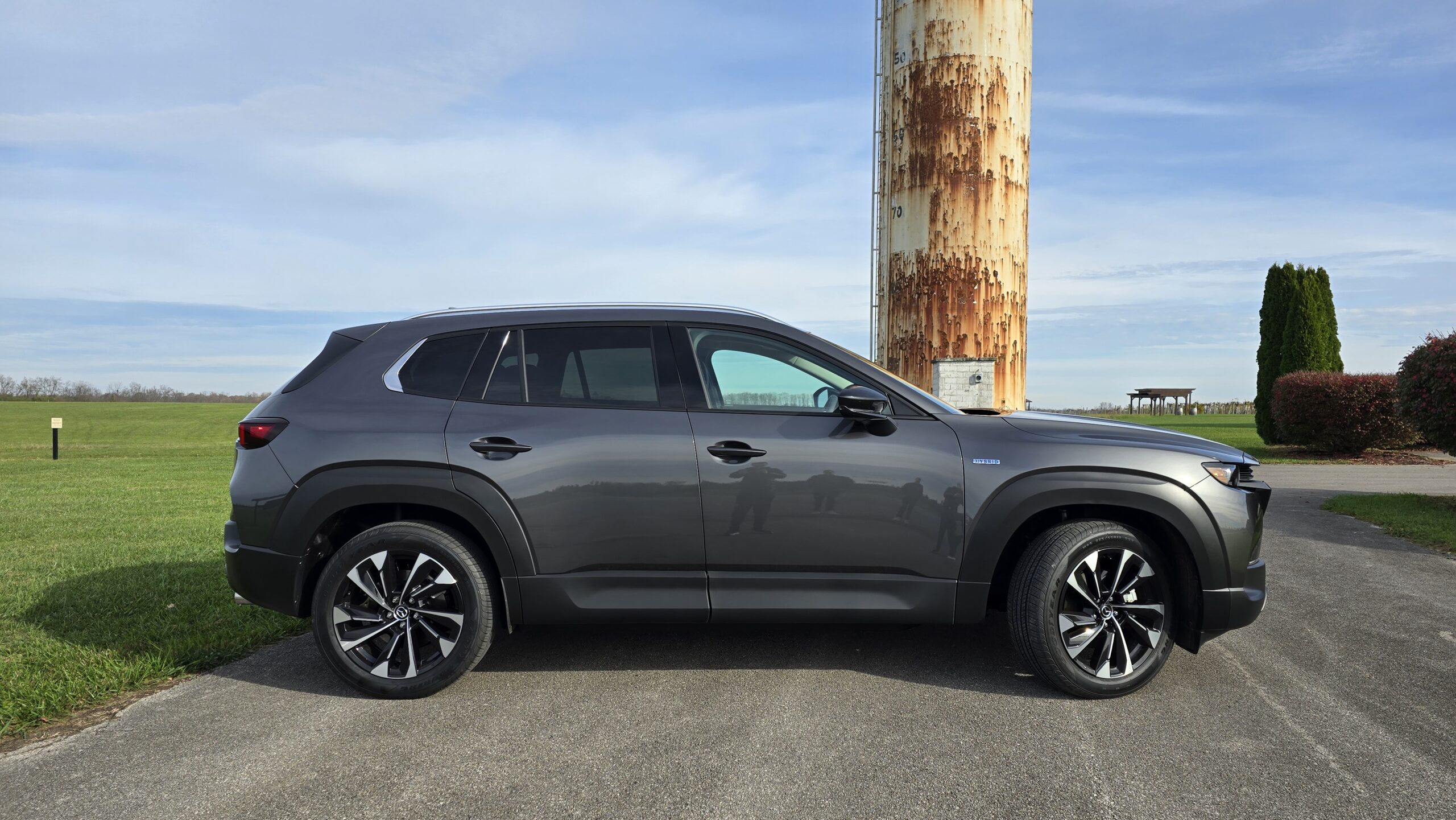

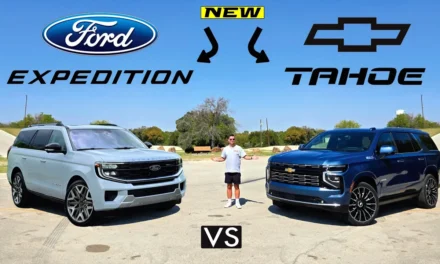

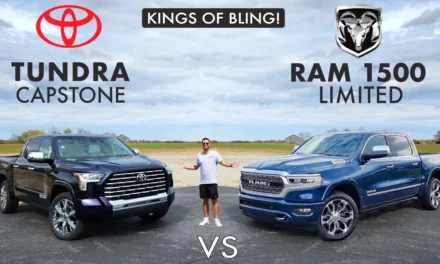

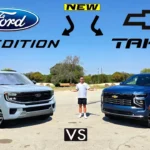




Recent Comments